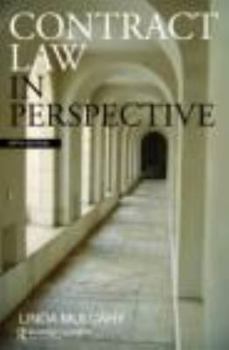Contract Law in Perspective
Select Format
Select Condition 
Book Overview
Contract Law in Perspective complements 'black letter' treatments of contract by looking at legal doctrine and statutes in their social, political and economic contexts. It increases students' understanding of the law of contract as well as convinces them why it is so important to us all. In addition to describing the key doctrines in the field, it explains the ideology behind them and considers the extent to which they serve the needs of the business community and consumers. The book broadens understanding and appreciation of the subject by reference to the 'big ideas' in contract theory and how these relate to practice at a level which is suitable for students.
This fifth edition:
has been substantially revised and now includes sections on privity and the Rights of Third Parties Act as well as a discussion of the Law Commision's Unfair Terms in Contract draft bill includes new chapter introductions and summaries designed to help students identify the key points and reflect on what they have learnt provides advice on further reading pointing students towards sources for more detailed study now includes additional self-test questions for students at the end of each chapter to enable them to consolidate and practice at regular intervals.Format:Paperback
Language:English
ISBN:0415444322
ISBN13:9780415444323
Release Date:May 2008
Publisher:Routledge Cavendish
Length:264 Pages
Weight:0.90 lbs.
Dimensions:0.9" x 6.1" x 9.1"
Customer Reviews
5 customer ratings | 5 reviews
There are currently no reviews. Be the first to review this work.



























